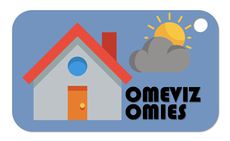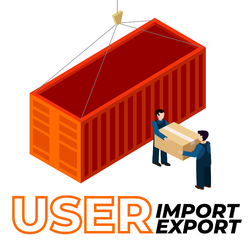Difference between revisions of "Project Groups"
Mechong.2015 (talk | contribs) |
Yu.fu.2015 (talk | contribs) |
||
| (71 intermediate revisions by 19 users not shown) | |||
| Line 50: | Line 50: | ||
'''Visualizing Korean Tourism''' | '''Visualizing Korean Tourism''' | ||
| − | Over the years, the tourism sector has been an essential part of South | + | Over the years, the tourism sector has been an essential part of South Korea's growth, with over 17 million of foreign tourists having reached Korea in 2016. Under the Ministry of Culture and Tourism of South Korea, the Korea Tourism Organisation (KTO) currently oversees and promotes Korea as a vibrant and popular tourism destination through various strategic assignments. However, KTO currently lacks a platform that aids in understanding areas that need further attention and investments amidst South Korea's rapidly developing tourism industry. We aim to provide an interactive visualisation of seasonal patterns and demographic trends for KTO to meet its goals in the future. |
| − | |||
|| | || | ||
* [[NO.G.A.D.A|Proposal]] | * [[NO.G.A.D.A|Proposal]] | ||
| − | * Poster | + | * [[NO.G.A.D.A_Poster|Poster]] |
| − | * Application | + | * [[NO.G.A.D.A_Application|Application]] |
| − | * Report | + | * [[NO.G.A.D.A_Research Paper|Report]] |
|| | || | ||
* Lee Hyeonjeong | * Lee Hyeonjeong | ||
| Line 68: | Line 67: | ||
[[File:Homeviz Homies logo.jpg|center|230px]] | [[File:Homeviz Homies logo.jpg|center|230px]] | ||
|| | || | ||
| − | '''Visualizing | + | '''Visualizing Housing Development Board Flats Supply, Demand and Affordability''' |
| + | |||
| + | In the recent years, housing prices have been on the rise making it difficult for Singaporeans to own a house. In the National Day Rally 2018, Prime Minister Mr. Lee Hsien Loong addressed to the issue of housing to Singaporean. He stated the importance of the 99-year lease of Home Ownership as compared to Singaporean renting a house. However, several older estates were built within short periods such as Marine Parade, Ang Mo Kio and Bedok when their 99-year lease has expired they will all expire at the same time and the flats will be returned to the state. The government has also been progressively taking back flats over the years for redevelopment. | ||
| + | |||
| + | Through our visualization, we hope to depict a visualization that allows the user to have an overview of the distribution of flats lease years, the supply and demand of flats, buying back prices of flats and number of households and units that are affected by the taking back of flats. | ||
| − | |||
|| | || | ||
| − | * [[Homviz Homies|Proposal]] | + | * [[Homviz Homies: Proposal Version 1|Proposal]] |
| − | * Poster | + | * [[Homviz Homies: Poster|Poster]] |
| − | * Application | + | * [[Homviz Homies: Application|Application]] |
| − | * Report | + | * [[Homviz Homies: Research Paper|Report]] |
|| | || | ||
* Lau Zi Quan | * Lau Zi Quan | ||
| Line 89: | Line 91: | ||
<p>According to Data.gov.sg, by 2030, the ageing population in Singapore is projected to reach approximately 90,000, which is almost double of the current ageing population. Therefore, a better understanding of the current ageing population situation and other facilities is needed in order to better prepare for the ageing population. We aim to provide an insightful data visualization on our ageing population in order to identify the gaps in the management of an ageing population for our country. </p> | <p>According to Data.gov.sg, by 2030, the ageing population in Singapore is projected to reach approximately 90,000, which is almost double of the current ageing population. Therefore, a better understanding of the current ageing population situation and other facilities is needed in order to better prepare for the ageing population. We aim to provide an insightful data visualization on our ageing population in order to identify the gaps in the management of an ageing population for our country. </p> | ||
|| | || | ||
| − | * [[ | + | * [[Proposal|Proposal]] |
| − | * Poster | + | * [[Poster|Poster]] |
| − | * Application | + | * [[Application|Application]] |
| − | * Report | + | * [[Report|Report]] |
|| | || | ||
* Ye Min Oo | * Ye Min Oo | ||
| Line 103: | Line 105: | ||
[[File:Unicorn_Logo.jpg|center|280px]] | [[File:Unicorn_Logo.jpg|center|280px]] | ||
|| | || | ||
| − | ''' | + | '''Visualising the Start-up Ecosystems in Singapore and Hong Kong''' |
| − | <p>Blockchain, artificial intelligence, data science, | + | <p>Blockchain, artificial intelligence, data science, fintech and internet-of-things are all buzzwords today in this new innovation era. With the arrival of the Third Wave of Innovation, increasing number of global start-ups are disrupting established industries by revolutionising new technology frontiers. The start-up landscape also begins to shift to Asia, coupled with the exponential growth in start-ups and investments in the region. Unicorn Ventures aims to analyse the differences in start-up ecosystems between Singapore and Hong Kong, two of the four Asian Tigers today. Due to the lack of data-driven comparisons, we hope to feature a highly interactive and fully customizable web-based visualization for policy makers, investors or founders to gain a comprehensive understanding of the start-up landscape based on industries across the years. </p> |
|| | || | ||
| − | * Proposal | + | * [[IS428 2018-19 T1 Group 03 Unicorn Ventures: Proposal|Proposal]] |
| − | * Poster | + | * [[IS428_2018-19_T1_Group_03_Unicorn_Ventures: Poster|Poster]] |
| − | * Application | + | * [https://is428-ay2018-2019-unicorn-ventures.shinyapps.io/application/ <font color="#000">Application</font>] |
| − | * Report | + | * [[IS428 2018-19 T1 Group 03 Unicorn Ventures: Report|Report]] |
|| | || | ||
* Chen Yuge | * Chen Yuge | ||
| Line 123: | Line 125: | ||
|| | || | ||
'''Visualising Global Data Breaches'''<br/> | '''Visualising Global Data Breaches'''<br/> | ||
| − | + | Cyber-attacks, amongst natural disasters, extreme weather, data fraud, and failure to address climate change have made its way to being one of the top five risks to global stability. In view of this, governmental organizations and multinational corporations have stepped up their investment efforts in cybersecurity to minimize the damage caused by cyber-attacks, specifically data breaches. With the use of an exploratory visualization tool, this project aims to help security personnel discover visually interesting patterns that could assist them in understanding the intention behind every cyber attack and hence better channel resources to effectively tackle future data breaches. With our exploratory visualization tool, users are able to derive insights regarding the correlation between the culprit behind the breach(source) and types of data compromised within industries and/or countries, when the attacks are likely to occur, and whether other countries are also experiencing similar attacks. | |
|| | || | ||
| − | * Proposal | + | * [[The Defenders: Proposal|Proposal]] |
| − | * Poster | + | * [[The Defenders: Poster|Poster]] |
| − | * Application | + | * [[The Defenders: Application|Application]] |
| − | * Report | + | * [[The Defenders: Research Paper|Report]] |
|| | || | ||
| − | * Lim | + | * Lim Lixuan |
| − | * Tan | + | * Tan Xinyi |
* Yeo Qi Xun | * Yeo Qi Xun | ||
|- | |- | ||
|| | || | ||
| − | <center>[[ | + | <center>[[TeamGeViz|GeViz]]</center><br/> |
[[File:Geviz.png|center|130px]] | [[File:Geviz.png|center|130px]] | ||
|| | || | ||
'''Visualizing Government Procurement'''<br /> | '''Visualizing Government Procurement'''<br /> | ||
| − | GeBIZ is a Singapore Government’s one-stop e-procurement portal which facilitates | + | GeBIZ is a Singapore Government’s one-stop e-procurement portal which facilitates tender activities between Singapore government and local and overseas suppliers. Currently, there is no available tool to aid the public and ministries to understand and gain insights on the procurement made by the government under each ministry. Hence, we are motivated to create an interactive visualisation tool on government's procurement spending to allow the public and ministries to identify spending patterns and gain insights into procurement spending under each ministry. |
| − | |||
| − | |||
| − | |||
|| | || | ||
| − | * Proposal | + | * [[GeViz|Proposal]] |
| − | * Poster | + | * [[1718t1is428T7_Poster|Poster]] |
| − | * Application | + | * [[1718t1is428T7_Application|Application]] |
| − | * Report | + | * [[1718t1is428T7_Research_Paper|Report]] |
|| | || | ||
* Sheryl Chong Man Er | * Sheryl Chong Man Er | ||
| − | * Kung | + | * Kung Jung Wen (Sofia) |
* Nguyen Dang Thanh Ha | * Nguyen Dang Thanh Ha | ||
|- | |- | ||
| Line 165: | Line 164: | ||
* [[UIUX: Poster|Poster]] | * [[UIUX: Poster|Poster]] | ||
* [[UIUX: Application|Application]] | * [[UIUX: Application|Application]] | ||
| − | * [[UIUX: | + | * [[UIUX: Research Paper|Research Paper]] |
|| | || | ||
* Sheryl Yeo | * Sheryl Yeo | ||
| Line 176: | Line 175: | ||
[[File:CJSlogo.png|center|230px]] | [[File:CJSlogo.png|center|230px]] | ||
|| | || | ||
| − | '''Happiness | + | '''Happiness Matters: Visualizing World Happiness Scores''' <br> |
| − | + | ||
| + | Since 2012, the United Nations Sustainable Development Solutions Network (SDSN) has been publishing a world happiness report that presents the happiness levels of 156 countries. 6 parameters that include GDP per capita, social support, healthy life expectancy, freedom to make life choices, generosity, and perception of corruption are used to come up with the happiness index for these different countries. Nevertheless, apart from presenting the final measurements, very little information is provided in this report with regards to the relationship between the 6 parameters and the final happiness index from year to year. | ||
| + | |||
| + | Our visualization, thus, explores the different trends between these 6 parameters and the final happiness index to see exactly which parameters has a higher weightage in the final scores. | ||
|| | || | ||
* [[IS428 Team wiki: Group12(CJS) Proposal|Proposal]] | * [[IS428 Team wiki: Group12(CJS) Proposal|Proposal]] | ||
| Line 195: | Line 197: | ||
'''Food Scape of Singapore''' | '''Food Scape of Singapore''' | ||
| − | Singapore is well known for its diversity and fusion of food, with | + | Singapore is well-known for its diversity and fusion of food, with influence from the Chinese, Indians, Malays, as well as the rich floating population of 5.79 million as of September 2018. Food is often used to preserve cultural identity, and in a rich multicultural city like Singapore’s, food culture is an important source of unity. |
| − | + | To enhance the current efforts of the Singaporean Government in understanding the distribution of restaurants, we contribute FoodScaper, an exploratory visualization tool to allow urban and cultural planners to explore and analyse the food landscape in Singapore. We demonstrate the potential of FoodScaper through the use of variables like cuisines served, average rating, number of reviews, opening hours and price range based on subzone as the level of aggregation and exploration. With the help of a kernel density heatmap, a hexbin density scatter plot, and a parallel coordinates plot, key insights can be uncovered and used to support future planning efforts of the Singaporean Government. | |
|| | || | ||
* [[FoodScapers_Proposal|Proposal]] | * [[FoodScapers_Proposal|Proposal]] | ||
| Line 212: | Line 214: | ||
[[File:Photo_2018-10-12_20-16-07.png|250px|center|Team ChargeMetrics]] | [[File:Photo_2018-10-12_20-16-07.png|250px|center|Team ChargeMetrics]] | ||
|| | || | ||
| − | ''' | + | '''Visual Exploration of Singapore's Public Residential Household Electricity Consumption using 3D Models''' |
| − | Household electricity consumption in Singapore has increased by about 17% over the past decade, according to a report by the National Environment Agency in May 2018. On aggregate levels, Singapore households consumed 7,295 GWh (gigawatt hours) in 2017, which roughly translates to an average expenditure of $1,000 a year on electricity per household. Electricity consumption is a national issue, especially given that about 95% of Singapore's electricity supply is imported. It is therefore important to encourage households to consume electricity in more sustainable ways. | + | Household electricity consumption in Singapore has increased by about 17% over the past decade, according to a report by the National Environment Agency in May 2018. On aggregate levels, Singapore households consumed 7,295 GWh (gigawatt hours) in 2017, which roughly translates to an average expenditure of $1,000 a year on electricity per household. Electricity consumption is a national issue, especially given that about 95% of Singapore's electricity supply is imported. It is therefore important to encourage households to consume electricity in more sustainable ways. |
| − | + | Our project visualises the spatial distribution and seasonal trend of household electricity consumption over time for different housing types. Through this, we hope to better communicate electricity consumption patterns to people in Singapore, and ultimately encourage sustainable consumption. | |
|| | || | ||
| − | |||
* [[Charge_Metrics_Proposal|Proposal]] | * [[Charge_Metrics_Proposal|Proposal]] | ||
* [[Charge_Metrics_Poster|Poster]] | * [[Charge_Metrics_Poster|Poster]] | ||
| Line 230: | Line 231: | ||
|| | || | ||
<center>[[Sixes|Sixes]]</center><br/> | <center>[[Sixes|Sixes]]</center><br/> | ||
| − | [[File:Sixes logo.jpg|center|230px]] | + | [[File:Sixes new logo.jpg|center|230px]] |
|| | || | ||
| − | '''Visualizing Prevalence of | + | '''Visualizing Prevalence of smoking''' |
| − | + | Every year, more than 480,000 people die due to tobacco-related diseases. That is around 1 in 5 of all deaths annually. It is estimated that 1 in 2 smokers will die from a smoking-related disease. This interactive data visualization tool shows modeled trends in smoking prevalence worldwide. Our aim is to reveal perspectives of smoking and correlates, determinants and consequences about smoking with visual analytics. | |
|| | || | ||
| − | * Proposal | + | * [[Sixes: Proposal Version 1|Proposal]] |
| − | * Poster | + | * [[Sixes: Poster |Poster]] |
| − | * Application | + | * [[Sixes: Application |Application]] |
| − | * Report | + | * [[Sixes: Research Paper |Report]] |
|| | || | ||
* Lyc Cheng | * Lyc Cheng | ||
| Line 279: | Line 280: | ||
* [[IS428_2018_19T1_Group11_Team|Home]] | * [[IS428_2018_19T1_Group11_Team|Home]] | ||
* [[IS428_2018_19T1_Group11_Proposal|Proposal]] | * [[IS428_2018_19T1_Group11_Proposal|Proposal]] | ||
| − | * Poster | + | * [[IS428_2018_19T1_Group11_Poster|Poster]] |
| − | * Application | + | * [[IS428_2018_19T1_Group11_Application|Application]] |
| − | * Report | + | * [[IS428_2018_19T1_Group11_Report|Report]] |
|| | || | ||
* Aaron Poh Weixin | * Aaron Poh Weixin | ||
| Line 289: | Line 290: | ||
|| | || | ||
| − | <center>[[ | + | <center>[[The Olympiad|The Olympiad]]</center> |
| − | [[File: | + | [[File:The Olympiad.png|frameless|center]] |
|| | || | ||
| − | ''' | + | '''Visualising Dominance and Bias in the Summer Olympics''' |
| + | <br> | ||
| + | On the surface, the Olympic Games exudes the spirit of competition and equality. However, the issue of Olympic Dynasties and Home Ground Advantage is very much prevalent in this prestigious event. Yet, many are still unaware about the severity of these issues. Hence, the Olympiad seeks to provide drilled-down visualizations that educate the public on the severity of the aforementioned issues. The Olympiad adopts the style of journalism and undertakes the challenge to present a wide variety of sports in a digestible and interactive manner. | ||
| − | + | || | |
| + | |||
| + | * [[The Olympiad|Proposal]] | ||
| + | * [[The Olympiad: Poster| Poster]] | ||
| + | * [[The Olympiad: Application| Application]] | ||
| + | * [[The Olympiad: Research Paper| Research Paper]] | ||
| − | |||
| − | |||
| − | |||
| − | |||
| − | |||
|| | || | ||
* Chew Yuxi | * Chew Yuxi | ||
| Line 425: | Line 428: | ||
|- | |- | ||
|- | |- | ||
| − | |width="10%"|<!-- Team --> [[ | + | |width="10%"|<!-- Team --> [[The Olympiad|The Olympiad]] |
|colspan="3"|<!-- First team member --> Chew Yuxi | |colspan="3"|<!-- First team member --> Chew Yuxi | ||
|colspan="3"|<!-- Second team member --> Tian Seet Yuen | |colspan="3"|<!-- Second team member --> Tian Seet Yuen | ||
Latest revision as of 23:37, 25 November 2018
|
|
|
|
|
|
Project Groups
Please change Your Team name to your project topic and change student name to your own name
| Project Team | Project Title/Description | Project Artifacts | Project Member |
|---|---|---|---|
|
NO.G.A.D.A
|
Visualizing Korean Tourism Over the years, the tourism sector has been an essential part of South Korea's growth, with over 17 million of foreign tourists having reached Korea in 2016. Under the Ministry of Culture and Tourism of South Korea, the Korea Tourism Organisation (KTO) currently oversees and promotes Korea as a vibrant and popular tourism destination through various strategic assignments. However, KTO currently lacks a platform that aids in understanding areas that need further attention and investments amidst South Korea's rapidly developing tourism industry. We aim to provide an interactive visualisation of seasonal patterns and demographic trends for KTO to meet its goals in the future. |
| |
|
|
Visualizing Housing Development Board Flats Supply, Demand and Affordability In the recent years, housing prices have been on the rise making it difficult for Singaporeans to own a house. In the National Day Rally 2018, Prime Minister Mr. Lee Hsien Loong addressed to the issue of housing to Singaporean. He stated the importance of the 99-year lease of Home Ownership as compared to Singaporean renting a house. However, several older estates were built within short periods such as Marine Parade, Ang Mo Kio and Bedok when their 99-year lease has expired they will all expire at the same time and the flats will be returned to the state. The government has also been progressively taking back flats over the years for redevelopment. Through our visualization, we hope to depict a visualization that allows the user to have an overview of the distribution of flats lease years, the supply and demand of flats, buying back prices of flats and number of households and units that are affected by the taking back of flats. |
| |
|
|
A Visual Study into Our Ageing Population According to Data.gov.sg, by 2030, the ageing population in Singapore is projected to reach approximately 90,000, which is almost double of the current ageing population. Therefore, a better understanding of the current ageing population situation and other facilities is needed in order to better prepare for the ageing population. We aim to provide an insightful data visualization on our ageing population in order to identify the gaps in the management of an ageing population for our country. |
| |
|
|
Visualising the Start-up Ecosystems in Singapore and Hong Kong Blockchain, artificial intelligence, data science, fintech and internet-of-things are all buzzwords today in this new innovation era. With the arrival of the Third Wave of Innovation, increasing number of global start-ups are disrupting established industries by revolutionising new technology frontiers. The start-up landscape also begins to shift to Asia, coupled with the exponential growth in start-ups and investments in the region. Unicorn Ventures aims to analyse the differences in start-up ecosystems between Singapore and Hong Kong, two of the four Asian Tigers today. Due to the lack of data-driven comparisons, we hope to feature a highly interactive and fully customizable web-based visualization for policy makers, investors or founders to gain a comprehensive understanding of the start-up landscape based on industries across the years. |
| |
|
|
Visualising Global Data Breaches |
| |
|
|
Visualizing Government Procurement |
| |
|
Visualizing Singapore’s Trade and Impact The robust Singapore economy and growth depends heavily on global trade. As a country with virtually no natural resources and comparatively small domestic market, Singapore must be open to external markets in order for the economy to thrive; as two-thirds of Singapore’s GDP is generated by external demand. PM Lee mentioned during the recent National Day Rally 2018 about how there might be potential trade impacts and challenges for Singapore; the international system is at a turning point due to the mounting trade tensions between the world’s economic giants (U.S. and China / U.S. and Europe). Thus, we aim to provide a visualization tool to allow the ease of monitoring, identifying trade patterns and impacts with reference to the total trade figures, commodities type, services and the trade relationships between countries over the years. |
| ||
|
|
Happiness Matters: Visualizing World Happiness Scores Since 2012, the United Nations Sustainable Development Solutions Network (SDSN) has been publishing a world happiness report that presents the happiness levels of 156 countries. 6 parameters that include GDP per capita, social support, healthy life expectancy, freedom to make life choices, generosity, and perception of corruption are used to come up with the happiness index for these different countries. Nevertheless, apart from presenting the final measurements, very little information is provided in this report with regards to the relationship between the 6 parameters and the final happiness index from year to year. Our visualization, thus, explores the different trends between these 6 parameters and the final happiness index to see exactly which parameters has a higher weightage in the final scores. |
| |
|
|
Food Scape of Singapore Singapore is well-known for its diversity and fusion of food, with influence from the Chinese, Indians, Malays, as well as the rich floating population of 5.79 million as of September 2018. Food is often used to preserve cultural identity, and in a rich multicultural city like Singapore’s, food culture is an important source of unity. To enhance the current efforts of the Singaporean Government in understanding the distribution of restaurants, we contribute FoodScaper, an exploratory visualization tool to allow urban and cultural planners to explore and analyse the food landscape in Singapore. We demonstrate the potential of FoodScaper through the use of variables like cuisines served, average rating, number of reviews, opening hours and price range based on subzone as the level of aggregation and exploration. With the help of a kernel density heatmap, a hexbin density scatter plot, and a parallel coordinates plot, key insights can be uncovered and used to support future planning efforts of the Singaporean Government. |
| |
|
Visual Exploration of Singapore's Public Residential Household Electricity Consumption using 3D Models Household electricity consumption in Singapore has increased by about 17% over the past decade, according to a report by the National Environment Agency in May 2018. On aggregate levels, Singapore households consumed 7,295 GWh (gigawatt hours) in 2017, which roughly translates to an average expenditure of $1,000 a year on electricity per household. Electricity consumption is a national issue, especially given that about 95% of Singapore's electricity supply is imported. It is therefore important to encourage households to consume electricity in more sustainable ways. Our project visualises the spatial distribution and seasonal trend of household electricity consumption over time for different housing types. Through this, we hope to better communicate electricity consumption patterns to people in Singapore, and ultimately encourage sustainable consumption. |
| ||
|
|
Visualizing Prevalence of smoking Every year, more than 480,000 people die due to tobacco-related diseases. That is around 1 in 5 of all deaths annually. It is estimated that 1 in 2 smokers will die from a smoking-related disease. This interactive data visualization tool shows modeled trends in smoking prevalence worldwide. Our aim is to reveal perspectives of smoking and correlates, determinants and consequences about smoking with visual analytics. |
| |
|
|
Visualizing Kickstarter Campaigns Kickstarter is a crowdfunding platform where individuals or businesses seek help from the public in financing their ideas to turn them into reality. The platform has a "all or nothing" rule where campaign/project initiators must set a funding goal, and can only receive the donated amount if it is at least equal to their funding goal. However as of October 5th of 2018, only 36% of projects in Kickstarter were able to reach their goal amount, which means that about two in every three campaigns do not get any funding for their ideas. Now we ask, how can we make a successful campaign then? |
|
|
|
|
Visualizing Grab's Sentiments GrabTaxi Holdings Pte. Ltd., or Grab began as a technology company offering ride-hailing services through its app in 2012. Since then, it has expanded its business operations into multi verticals, including delivery services (GrabFood, GrabExpress), as well as payment methods (GrabPay). Leveraging on social media listening, this project will help Grab to understand Singaporeans’ sentiments toward the company. We will be able to identify some topics currently embedded within the social media discussion space, understanding what are some current concerns that consumers have expressed, and be able to track changes in the intensities of these topics over time. This provides Grab with an avenue to effectively allocate resources to improve on its services by addressing the most important issues first. Follow our journey as we visualise public sentiments on Grab’s services! |
| |
|
|
Visualising Dominance and Bias in the Summer Olympics
|
|
| Team | Members | |||||||||||||||||
|---|---|---|---|---|---|---|---|---|---|---|---|---|---|---|---|---|---|---|
| FoodScapers | Mallika Gokarn | Chrysta Yuen Jia Lin | Sean Koh Jia Ming | Student name | Student name | Student name | ||||||||||||
| Homviz Homies | Zi Quan | Vera Low Yun | Le Thanh An | Student name | Student name | Student name | ||||||||||||
| GeViz | Sheryl Chong Man Er | Kung Jun Wen (Sofia) | Nguyen Dang Thanh Ha | Student name | Student name | Student name | ||||||||||||
| NO.G.A.D.A | Lee Hyeonjeong | Kim Do Yeon | Huiyeon Kim | Student name | Student name | Student name | ||||||||||||
| Group 12(CJS) | Chaw Khin Nyein | Jonas Nevin | Sheng Wang | Student name | Student name | Student name | ||||||||||||
| Charge Metrics | Zheng BingBing | Chua Sing Rue | Student name | Student name | Student name | Student name | ||||||||||||
| Unicorn Ventures | Chen Yuge | Fu Yu | Zhuo Yunying | Student name | Student name | Student name | ||||||||||||
| Apple Crunch | Le Van Tuan Long | Rainean Young Calubad | Arivazhagan Karunakaran | Student name | Student name | Student name | ||||||||||||
| The Defenders | Lim Li Xuan | Yeo Qi Xun | Tan Xin Yi | Student name | Student name | Student name | ||||||||||||
| MicroHeart | Ahmad Saifullah Bin Mustaffa | Cliff Halim Tirtamaya | Ye Min Oo | Student name | Student name | Student name | ||||||||||||
| Sixes | Liu Jinlong | Ji Xinyi | Lyu Cheng | Student name | Student name | Student name | ||||||||||||
| UserImportUserExport | Sheryl Yeo | Vincent Koh | Ng Wei En | Student name | Student name | Student name | ||||||||||||
| Grab C.H.A | Aaron Poh Weixin | Huang Huanyuan | Siow Chun Yen Jodie | Student name | Student name | Student name | ||||||||||||
| The Olympiad | Chew Yuxi | Tian Seet Yuen | Clifton Ngeow Shu-Jin | Student name | Student name | Student name | ||||||||||||














